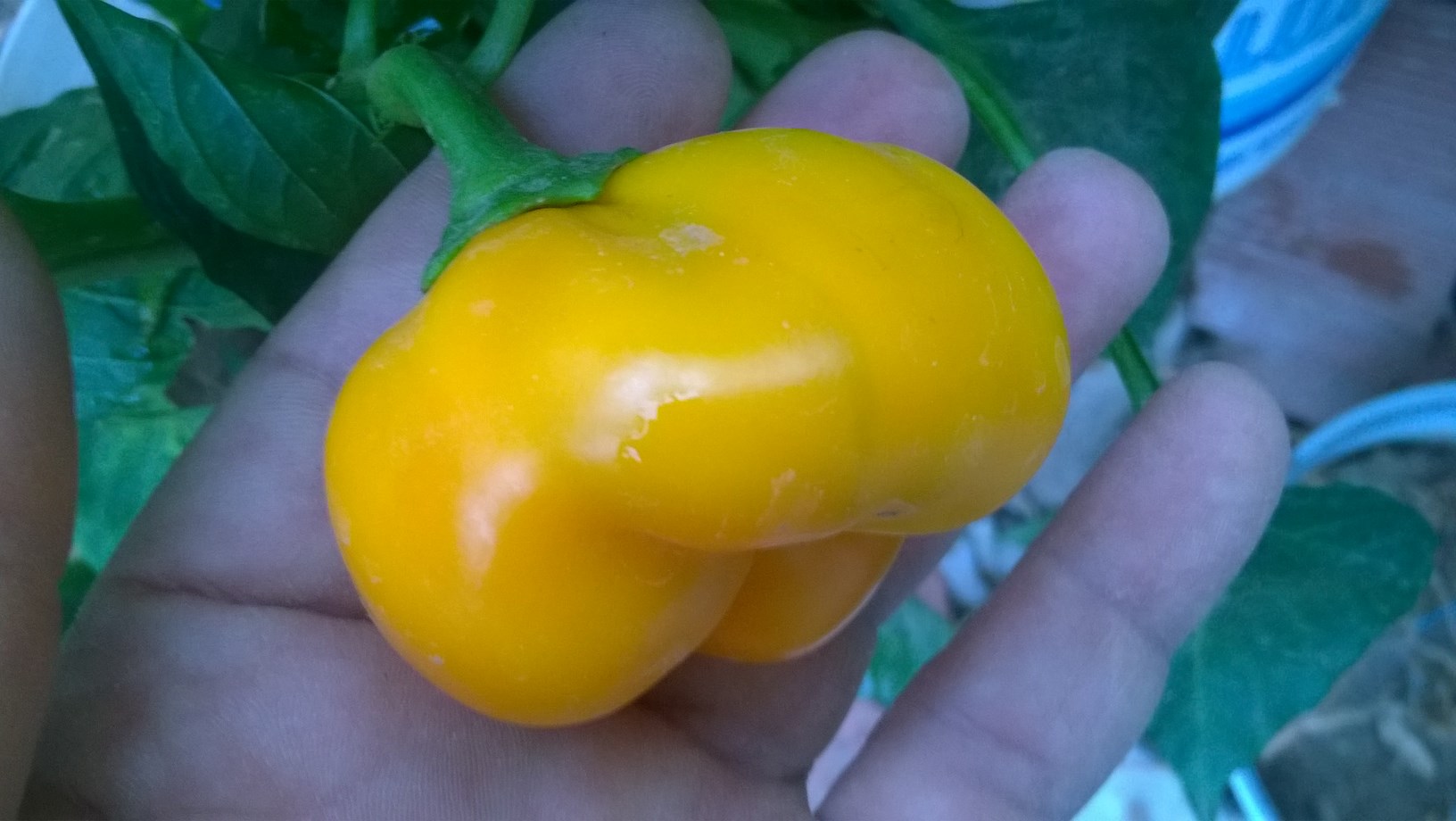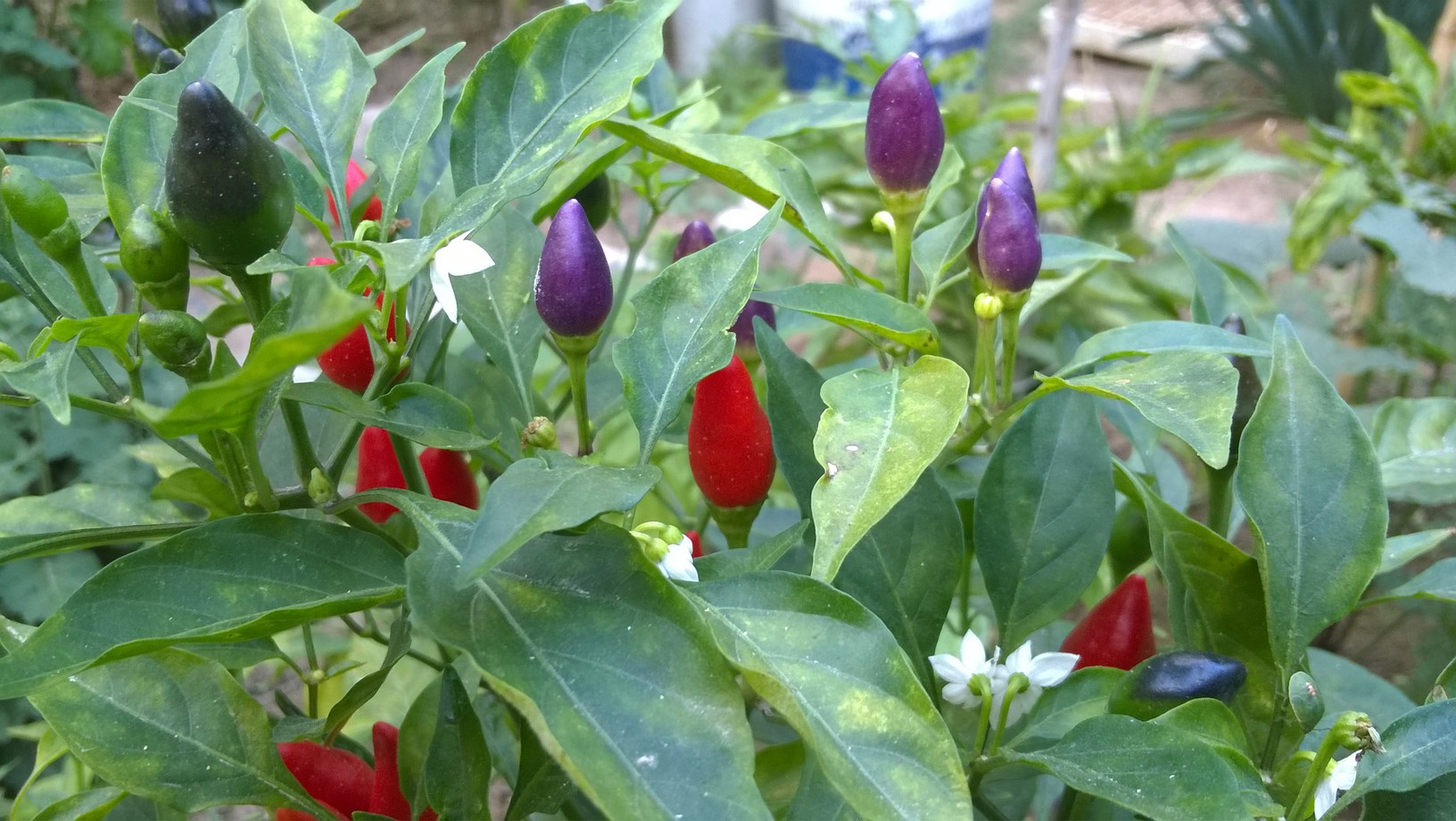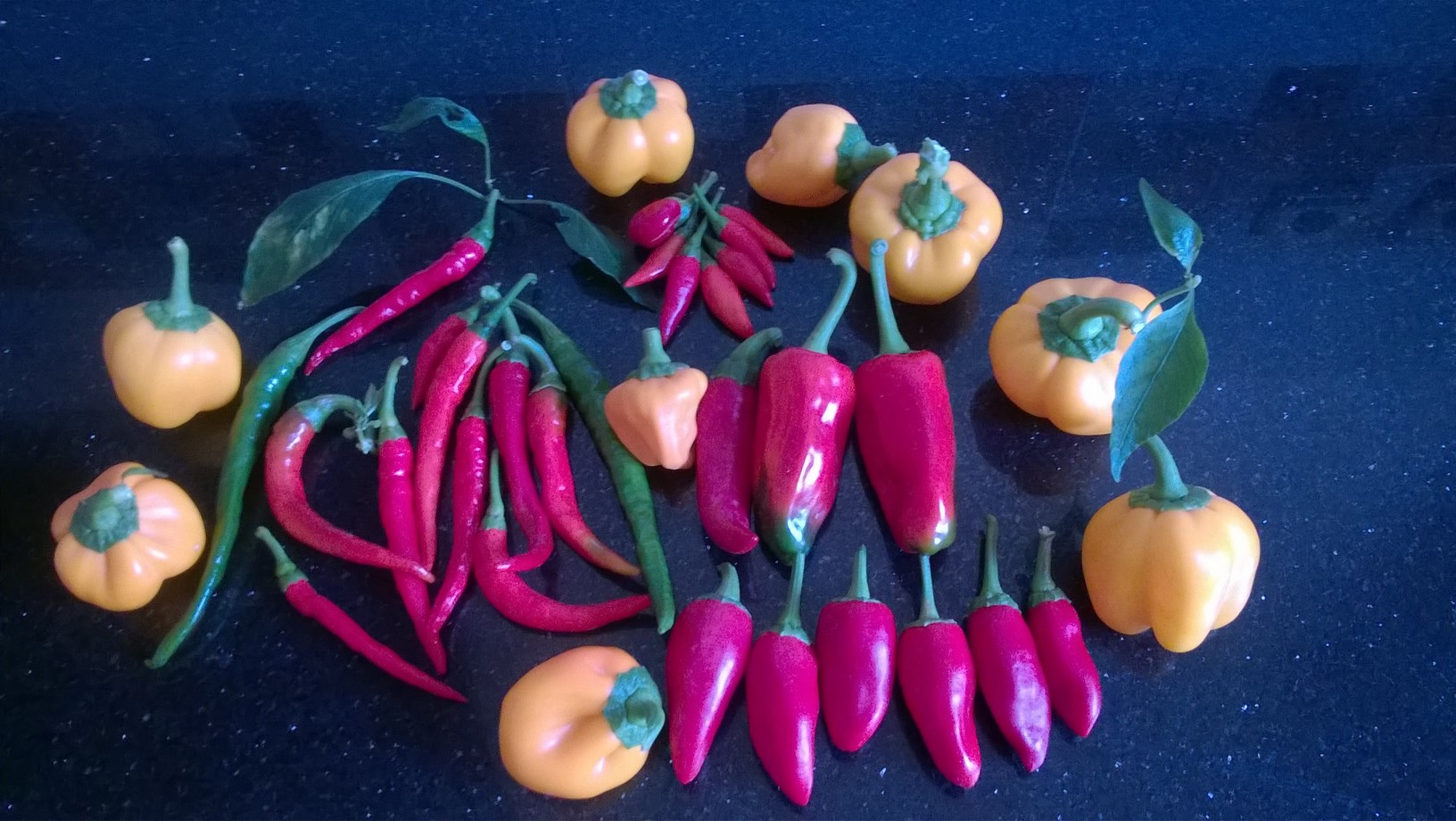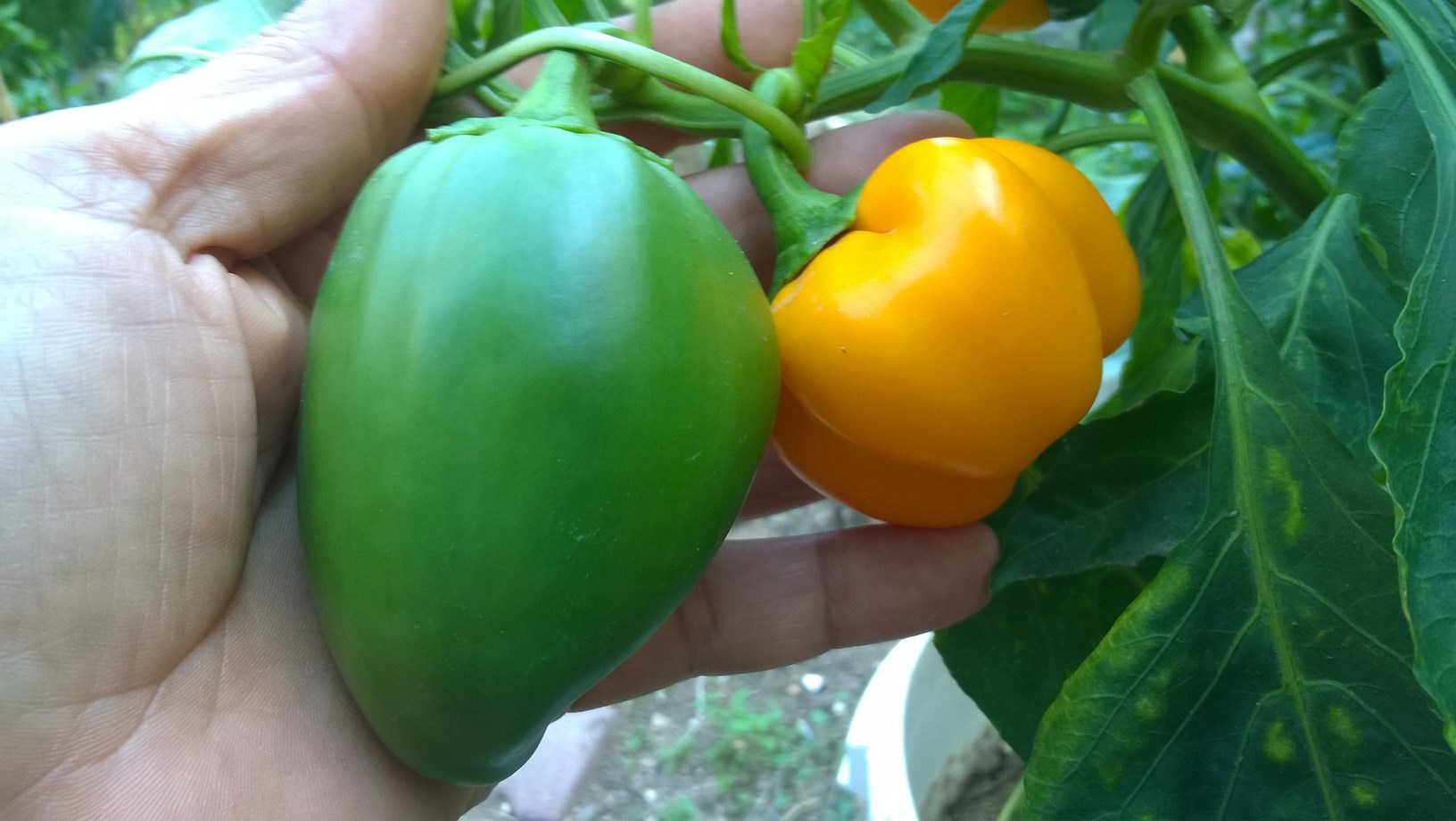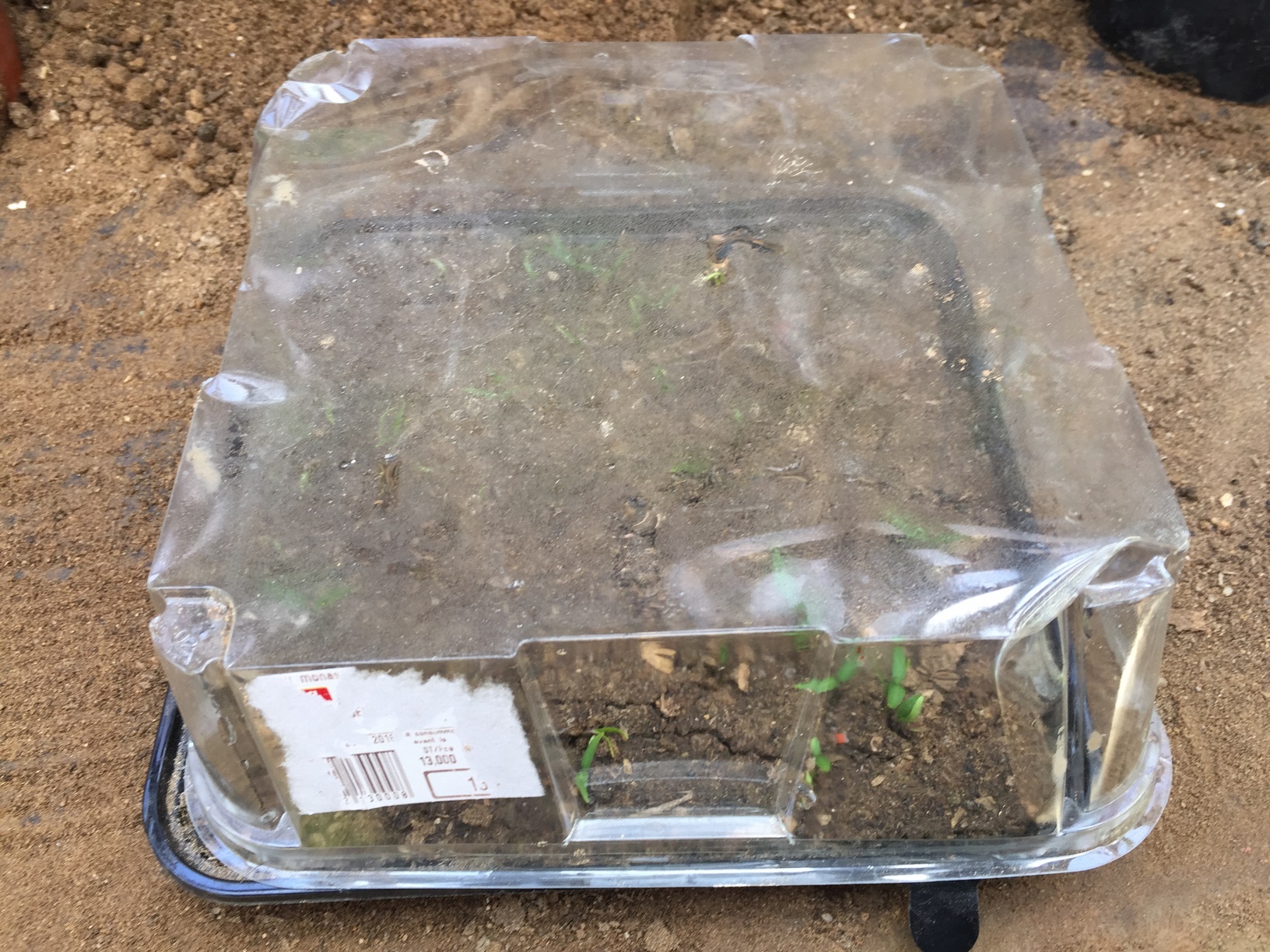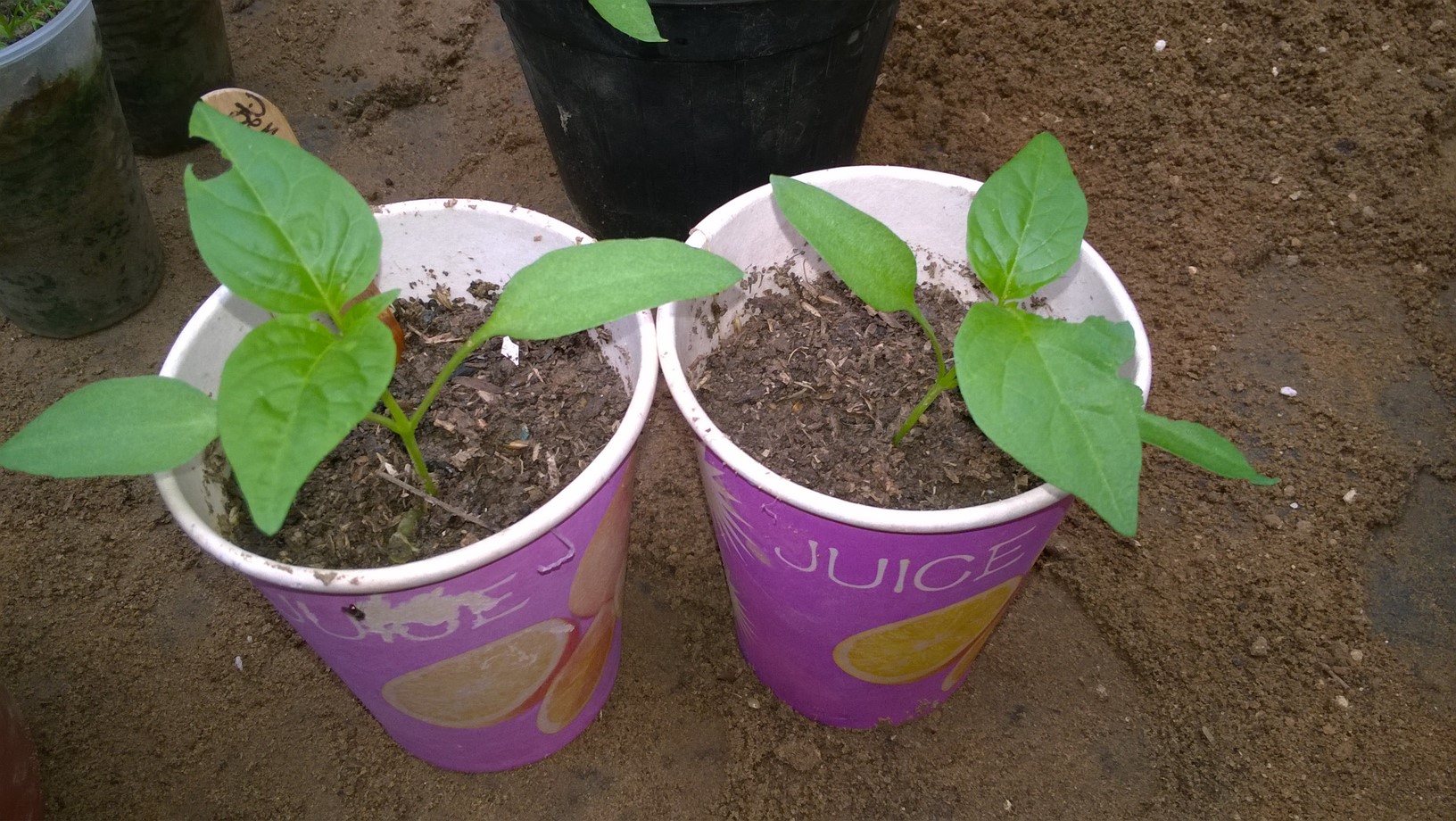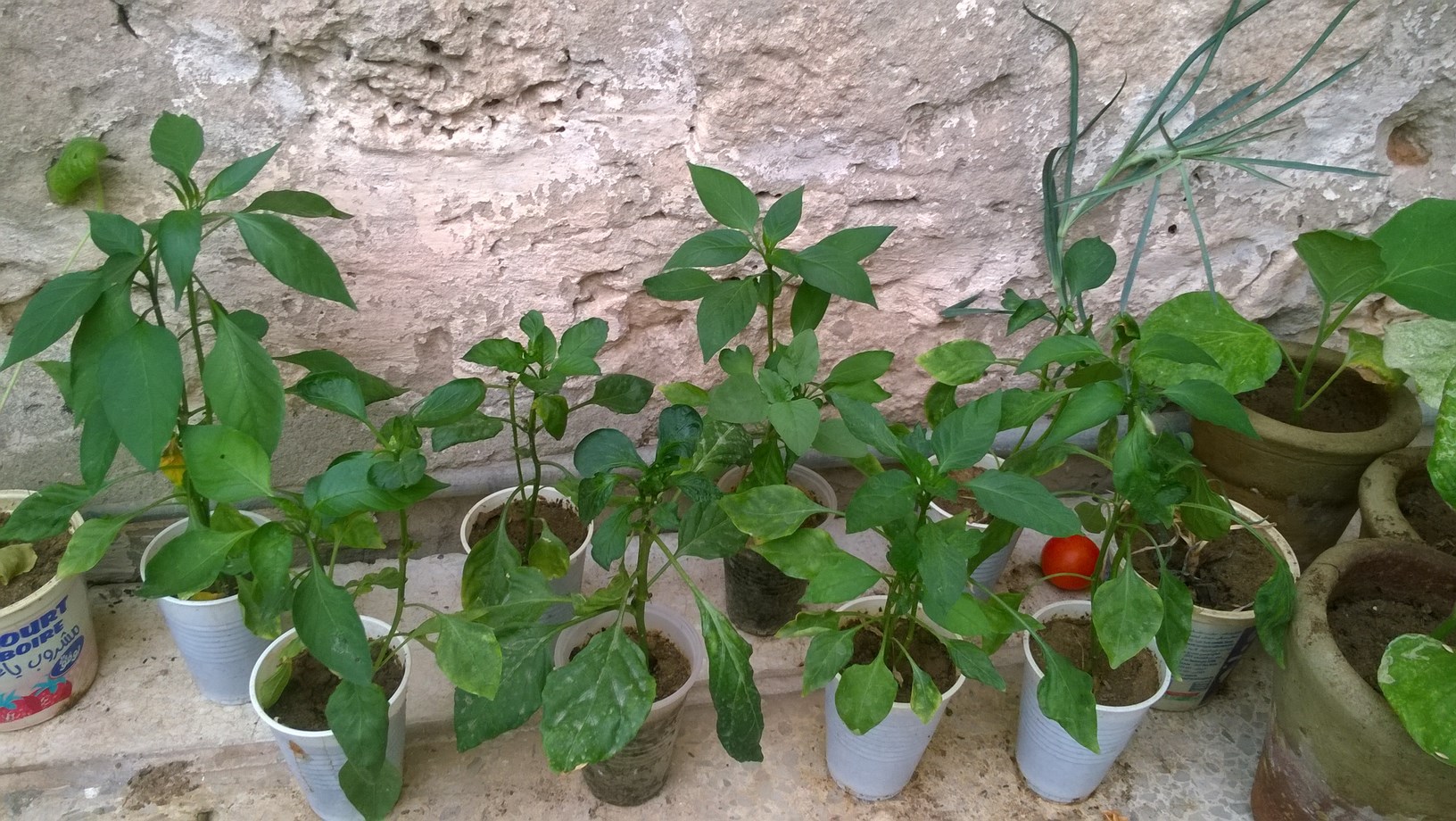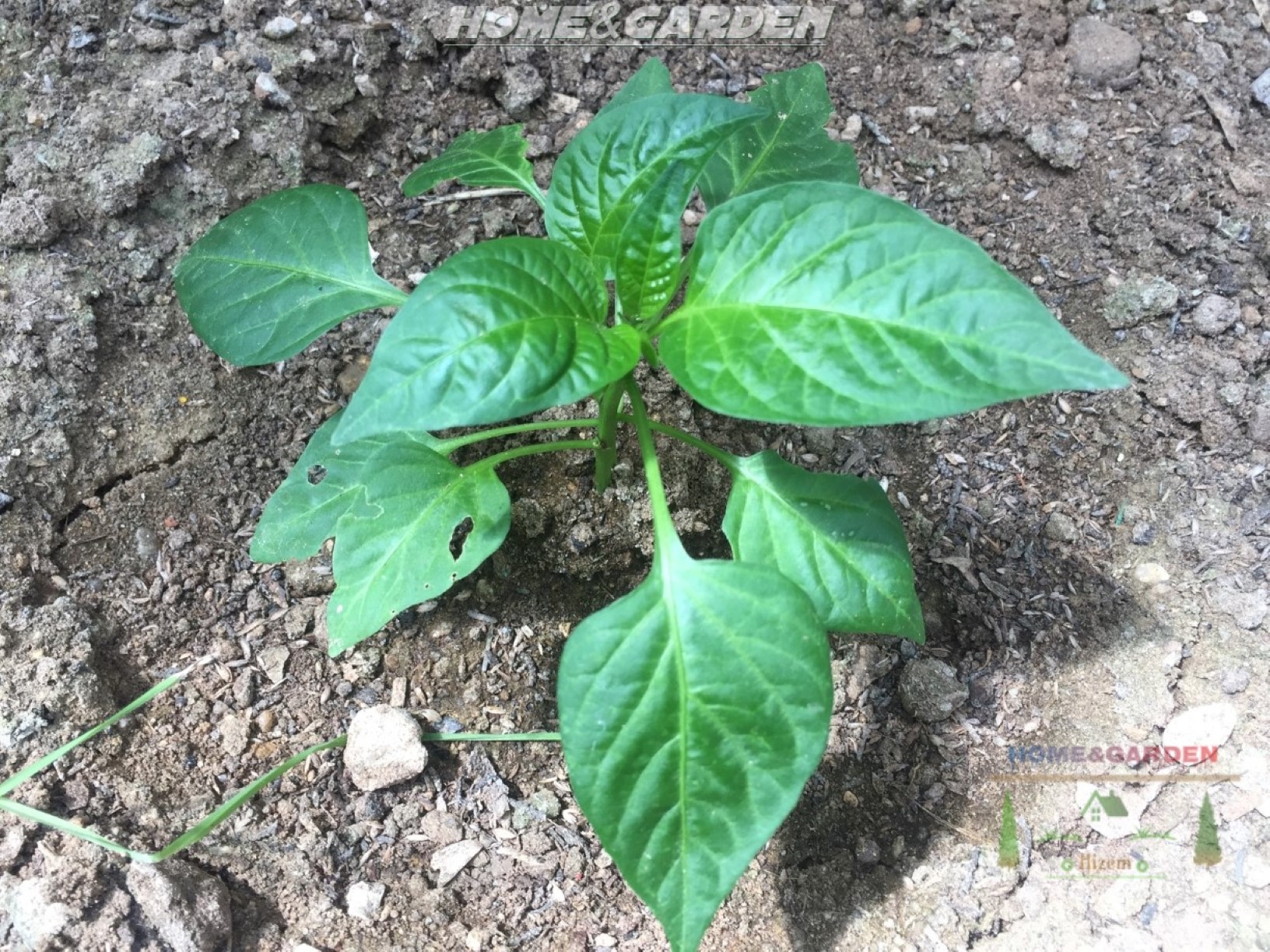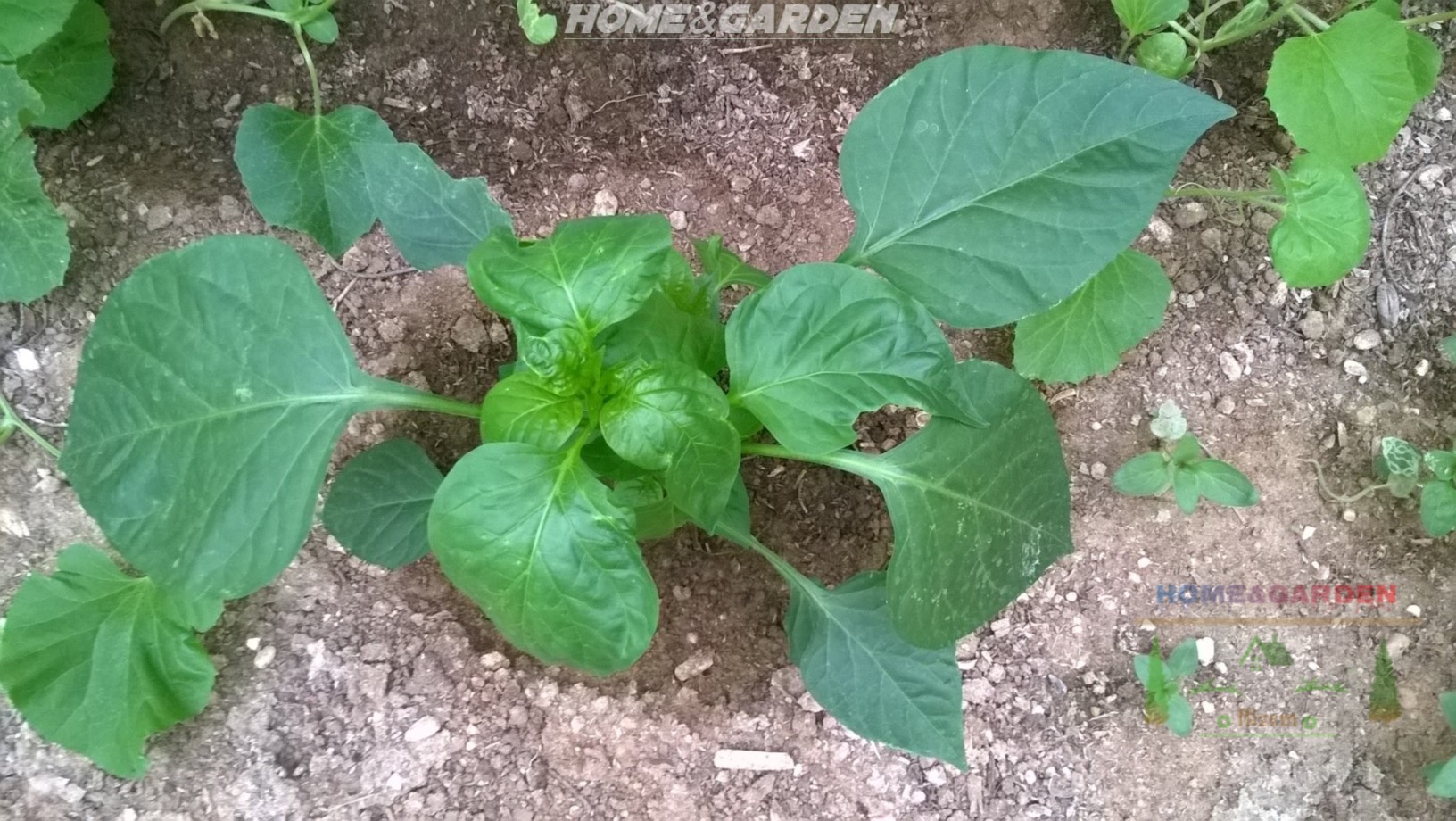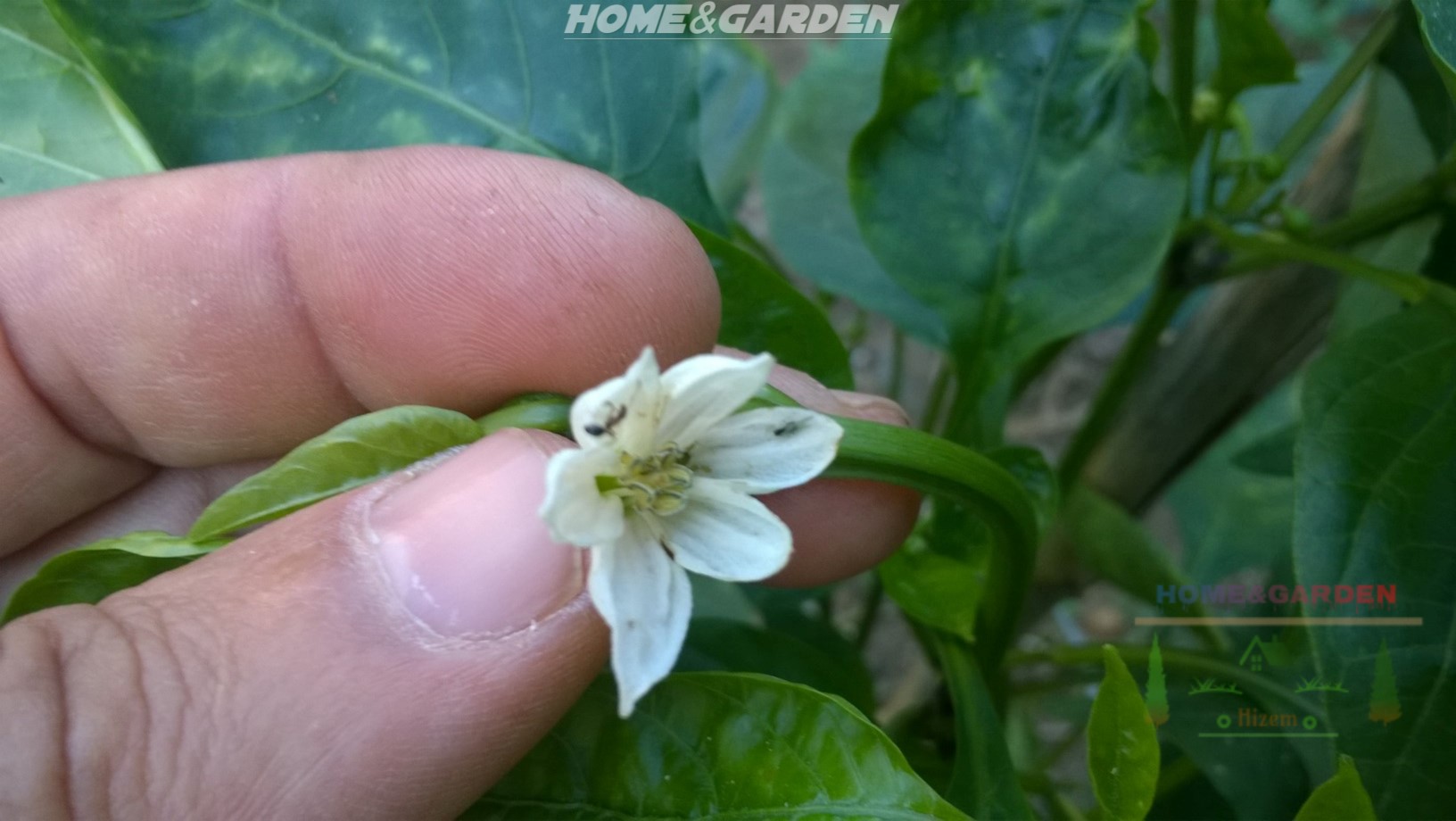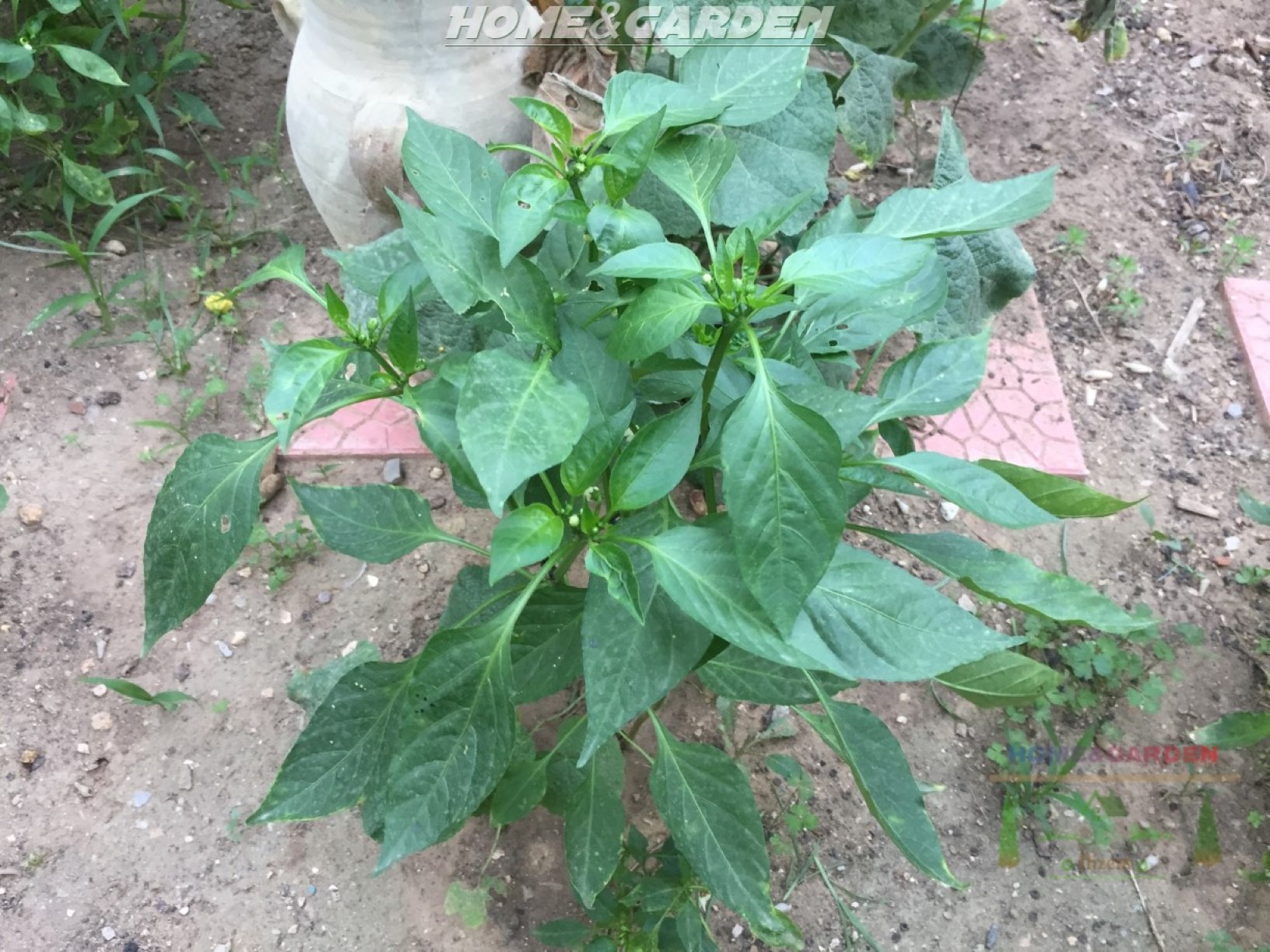History Of Peppers
Pepper is often described as the "king of spices," and it shares a place on most dinner tables. The word pepper originated from the Sanskrit word pippali, meaning berry. Peppers belong to the nightshade (Solanaceae) family of plants, along with chili pepper, cayenne pepper, eggplant, tomatoes and common potatoes. Most plants in this family are rich in potent intoxicants and psychoactive chemical substances called tropane alkaloids, some of which have hallucinogenic and even reputed mystical qualities. Their genus/species name is Capsicum annuum. Peppers are the podlike fruits of leafy plants that grows two to four feet high and have white flowers. Botanists can't make up their mind whether they are a fruit or berry. No matter what color they are when they ripen all peppers come from pods that are green before they ripen. Peppers are usually grown as annuals in temperate regions for only one growing season. The active ingredient in hot peppers and chilies is an alkaloid called capsaicin. It is produced by the glands of the pepper's placenta, the part of the plant right below the stem where the seeds are.
Pepper Varieties
There are hundreds of different varieties of peppers, if not more, as peppers mutate spontaneously. Plus that they taste different when grown in different areas .They come in a wide range of colors, flavors, shapes, heat levels and sizes. Pepper varieties can be divided broadly into sweet peppers and hot peppers, or chiles. All chiles peppers are various species of the genus Capsicum of the plant family Solanaceae, and are thus related to eggplants and tomatoes.
. Sweet peppers .
The best known sweet peppers are bell peppers, named for their bell-like shape. They have a mild, sweet flavor and crisp juicy flesh. When they are young most bell peppers are a rich, bright green in color and undergo color changes during the process of maturation. These color changes can range from emerging yellow and oranges to reds and purples and even deep purple shades that appear nearly black in color. Some varieties of bell peppers can stay green throughout the maturation process and some varieties can also undergo color changes very early in the development process.
Bell Peppers are one of the most disease-resistant types of peppers, they are easy to grow for beginners.
Bell Peppers are one of the most disease-resistant types of peppers, they are easy to grow for beginners.
There's all so "mini bell peppers." Like their name suggests, these bell peppers are only about 1/3rd the size of a typical bell pepper. Mini bell peppers are not simply "small" bell peppers but unique varieties that can be challenging to grow at present due to their lesser disease resistance.
Sweet Pepper Varieties
California Wonder
This 1928 heirloom and a favorite among gardeners across the world, 'Sweet California Wonder' produces a mass of blocky, 4-inch bell peppers. This pepper have a consistent production, sweet and crispy, turns from green to red.
This pepper maintain a consistent fruit shape, plants average 2 feet tall, sweet and tangy flavor.
Here’s my step-by-step guide to help growing pepper from seeds for beginners!

There are several reasons you may want to prune peppers. One reason is to help the pepper plants develop stronger sturdier stems. Another reason is to force or create a bushier plant with more side shoots which leads to more flowers and potentially more peppers.

. Create a favorable soil environment
Hot Peppers want organically rich, well-drained soil. In advance of planting add plenty of organic fertilizer such well aged chicken manure to the planting bed, this will feed the plants during the growing season.
. A Proper Hole
A good planting hole is very important to how well the transplant adapts and grows. The planting hole should be at least double the width as the root ball of the seedling, and the soil in and around the planting hole should be loosened well to make it easier for the pepper plant roots to grow
. Prevent Transplant Shock
Transplant shock can be very common when transplanting pepper seedlings, the seedling may need a bit of help recovering. By Adding phosphorus to the planting holes this will help reduce transplant shock, and help the seedlings to develop stronger roots. Phosphorus is essential for root development. Use organic sources of phosphorus such bone meal. Never use fertilizers that are high in nitrogen for newly transplanted seedlings.
. Transplant the right depth
Transplanting pepper seedling too deep, or too shallow, can cause unwanted results. So set the plants slightly deeper "up to an inch" than they were grown in the container.
. Water Religiously
Newly transplanted pepper plants need to be watered well until they have become well established in their new environment and began developing new growth.
After selecting healthy and strong pepper seedlings and brought them to your garden spot, make sure to transplant them correctly!
Carmen
Italian sweet pepper, green to red, 3"-4" long, very prolific and tolerant of varied temperatures.Orange Blaze
This pepper have a good disease resistance, it turn from green to bright orange.Mexibell
This pepper is large and blocky bell pepper, have a mild chili flavor.
Block Party
This pepper maintain a consistent fruit shape, plants average 2 feet tall, sweet and tangy flavor.Gold Standard
Very large sweet pepper variety, this pepper have a consistent production.Sweetheart
This pepper have a good disease resistance, very sweet, turn green to red.Sweet Banana
This heirloom sweet pepper variety is a 6"-7" long and tapered, thin skin, pale yellow to light orange to deep red.Friggitello
Italian pepper is a 3"-4" long and is tapered with slight wrinkles.Bull Nosed
Very large heirloom bell pepper variety, have a mild and sweet taste, pepper is blocky with thick walls, turn from green to red.Hot Peppers
Hot peppers are distinguished from sweet peppers simply by their pungency or hotness of flavor. There are thousands of hot pepper varieties in the world.
Most commonly hot peppers are called chili peppers. Chili and the term came to be commonly used to describe any pepper that was hot flavored. Capsaicin is the chemical in hot pepper varieties that produces the heat. Hot peppers are rated with a Scoville score which indicates the amount of capsaicin in each variety. Hot peppers are easy to grow, and they provide a "kick" to meals and snacks.
As a lover of hot peppers, you will likely grow several varieties. In addition to varying degrees of "heat", each hot has it's own taste and texture. Think of what you can do with the choice and selection!
Hot peppers go by several names. Most commonly hot peppers are called chili peppers in the United States. ‘Chile’ is Spanish for pepper. In Mexico chile dulce is a sweet pepper, chile jalapeño is a jalapeño pepper. When the name chile first came to the United States it was used to mean different kinds of peppers in different parts of the country. In time, the spelling “chile” was eventually corrupted to “chili” and the term came to be commonly used to describe any pepper that was hot flavored.
Hot Pepper Varieties
Cayenne
Cayenne chiles are long, skinny, and very hot. They are relatives of wild chiles from South and Central America.
Hot Banana
Banana pepper grows both sweet and hot varieties. Known as bácskai fehér in Hungary. About 6 to 7 inches long.
Serrano
The serrano pepper is a small Mexican pepper with thick, juicy walls, so it’s a great hot-salsa pepper, and is widely available and versatile.About 1.5 to 2.5 inches long.
Thai
This tiny chile adds serious amounts of heat to Southeast Asian cuisines. You may find either green or red Thai chiles; both are very spicy. Throw them whole into Thai soups .About 1 to 2 inches long
Hot Cherry
These pepper vary in size and shape and are very hot. They are usually round, though sometimes more of a triangular shape. Cherry peppers can also be sweet. About 1 to 2 inches long.
How To Grow Peppers
From sweet, crisp peppers in rainbow shades to hot enough to bring tears to your eyes, all peppers share a preference for a long, warm growing season.
Peppers are one of the most strikingly diverse and profitable vegetable crops. As peppers change from green to yellow, orange, or red, both their vitamin content and flavor improve dramatically. People who think they don’t like peppers often change their minds once they have tasted fully ripened, garden-grown peppers.
Here’s my step-by-step guide to help growing pepper from seeds for beginners!
Most peppers mature in 60-90 days but hot peppers can take up to 150 days. Keep in mind, that the number of days to maturity stated on the seed packet refers to the days after transplanting until the plant produces a full-sized fruit. You must add 8-10 weeks for the time between sowing and transplanting which means most of us will be starting pepper plants indoors in January or February!
If you're new to growing peppers, you may want to start with one of the early varieties, like bell pepper as it's so easy to grow one of the most disease-resistant types of peppers, they are the perfect pepper to grow for beginners. But, really, try any variety and you're likely to be pleased.
Starting Peppers Indoors
Growing peppers from seed requires a certain amount of patience. The willingness to dedicate time to nurture that seedling, and care for it as it matures, can reward you with healthy, robust, prolific plants and amazing fruits for your patience. As peppers needs warm temperatures and a long growing season. Start indoors 5-8 weeks before last frost in your area.
Growing your own peppers from seed can be very rewarding. When you start from seeds, there is a very big variety available. And as hot pepper popularity is growing constantly, the varieties just keep expanding. To start, pick out your selections from here!
Watch Starting Peppers Indoors Video
- Before you plant your seeds, soak them overnight in warm water to give them a head start. I have grown seeds with and without soaking, and I found the ones i soaked did a better job of sprouting. So i pop the seeds in a glass with warm water overnight, and then plant in the morning. I recommend soaking seeds overnight in warm water .
- Pepper seeds require moisture and warmth to break their dormancy and sprout. Dormancy is the seeds built-in survival mechanism which prevents seeds from germinating in cold conditions which would kill the young seedlings. Just be aware that the germination process can be slow and irregular as the degree of dormancy varies considerably between species.
- Sow your pepper seeds indoors 1cm (½”) deep and keep the soil as warm as possible: 27°C (80°F) is best. Don’t over-water the pepper seeds, as this can cause them to rot or cause damping off. The soil surface should dry out slightly between waterings.
- Seeds sprout in 8-21 days depending on soil temperature.
- Once the first seeds start to sprout you’ll want to remove the plastic cover, as this can retain too much moisture in the soil and plant environment for many hot pepper varieties.
- Make sure the seedlings have enough sunlight and they are getting between 14-16 hours of light every day and keep the seedlings under a well-lit window all day
- The first leaves that sprouted from the seed are the cotyledons (an embryonic leaf in seed-bearing plants, the first leaves to appear from a germinating seed.)
- The next set of leaves the seedling will develop are called "true leaves".

- Try to keep seedlings at 18-24°C (64-75°F) in the day, and 16-18°C (61-64°F) at night.
- In about 2 weeks, when the first true leaves begin to form, carefully separate the seedlings and transplant each strong and healthy seedling into larger cups once they are about 3″ with their first set of true leaves.
- Once your pepper seedlings start to grow their true leaves, it’s time to start fertilizing them, but you don’t want to feed seedlings a full dose of fertilizer. It’s best to start with a weak dose at first, and slowly increase the strength of the fertilizer as your pepper seedlings grow larger. I recommend using a natural, organic fertilizer rather than chemicals.
Watch How to Transplant Pepper Seedlings Video
- Once the seedlings have been transplanted to the pots, grow them at 70°F/21°C days, 60°F/16°C nights. Use a well-drained growing medium in the pots.
- As your seedlings grow, keep an eye out for downy mildew, aphids, white fly and other pests that can be problematic for your fragil plants. before watering again wait until the soil is dry and water once or twice a week with an organic fertilizer solution.
- Move the plants to a sunny southern window until you can transplant them into the garden. Don't set out your pepper transplants until night temperatures average around 55-60 degrees F. Once you have healthy seedlings you're ready for the transplant and growing stage.
Pruning Pepper Transplants
There are several reasons you may want to prune peppers. One reason is to help the pepper plants develop stronger sturdier stems. Another reason is to force or create a bushier plant with more side shoots which leads to more flowers and potentially more peppers.
- Pruning peppers can be done many ways. This is just one way I prefer.
- Pruning or topping off of the growth-tip is fairly simple. Just remove the top of the pepper.
- Topping off or pruning pepper plants helps handle high wind seasons and greater support heavy pepper crops. With a stronger stem, your pepper plants can experience less breaking.
- Various reasons are presented as to why pruning peppers may be needed. One of them is helping the plants develop sturdier stems. On the other hand, homeowners want to make or force a bushier pepper plant with more side shoots. This eventually results in more flowers and possibly, more peppers.
Watch Pruning Pepper Transplants Video
- This is just one way I prefer its so simple and easy and soon you will have a bushier plant with more side shoots. Your pruned plant will grow upward, it won't remain stunted, as new growing tips take over.
Hardening off Pepper Seedlings

In order to give your pepper plants the best chance of success it is best to ‘harden them off’ prior to leaving them outside full time. About 7 days before planting your pepper plants outdoors, help acclimate them to temperatures, sunlight, and wind. This is the process of hardening off, or gradually acclimating you new plants to outdoor conditions. These plants have spent their short lives in a warm, sunny, protected place and won't fare well if you don't expose them slowly to the elements. Before you intend to plant, put your transplants outdoors in an area where they'll be protected from the direct sunlight and wind. Leave them out for a few hours and bring them back inside. Repeat this each day, gradually increasing the amount of time they're outside and the degree of exposure to sun and wind. Gradual exposure helps your plants toughen up and reduces the possibility of injury. With proper hardening off, they’ll have an easier transition to the garden and begin producing peppers sooner.
Transplanting Pepper Seedlings in The garden
Peppers are warm season crops that grow best at temperatures of "70-80° F" during the day and "60-70° F" during the night. So wait until the last frost date for your zone has passed and night time temperatures are above "50° F".
The key of success is:
Hot Peppers want organically rich, well-drained soil. In advance of planting add plenty of organic fertilizer such well aged chicken manure to the planting bed, this will feed the plants during the growing season.
. A Proper Hole
A good planting hole is very important to how well the transplant adapts and grows. The planting hole should be at least double the width as the root ball of the seedling, and the soil in and around the planting hole should be loosened well to make it easier for the pepper plant roots to grow
. Prevent Transplant Shock
Transplant shock can be very common when transplanting pepper seedlings, the seedling may need a bit of help recovering. By Adding phosphorus to the planting holes this will help reduce transplant shock, and help the seedlings to develop stronger roots. Phosphorus is essential for root development. Use organic sources of phosphorus such bone meal. Never use fertilizers that are high in nitrogen for newly transplanted seedlings.
. Transplant the right depth
Transplanting pepper seedling too deep, or too shallow, can cause unwanted results. So set the plants slightly deeper "up to an inch" than they were grown in the container.
Newly transplanted pepper plants need to be watered well until they have become well established in their new environment and began developing new growth.
How to Transplant Seedlings
After selecting healthy and strong pepper seedlings and brought them to your garden spot, make sure to transplant them correctly!
- Squeeze the pot to loosen the root ball. This will help the seedling root ball to slide out from the container.
- Slide your fingers on either side of the stem across the soil surface, then flip out the plant into your hand.
- Tease the roots apart slightly.
- Dig a hole large enough for seedling.
- Once the seedling is removed from the container transplant it immediately. Do not leave the seedling sitting out.
- Set seedling in hole level with soil surface.
- Fill in the hole with garden soil, then press firmly around the pepper plant base to form a slight depression around the stem to accumulate water.
- Space the new plants far enough apart so that when they are fully grown, they are not crowded.
- Waters the transplanted seedlings immediately this helps reduce transplant shock .
- Feed your pepper seedlings to kick their start growth. I always transplant each seedling with a hefty handful of well aged chicken manure. Remember that chicken manure has to be allowed to age before you use it in your garden. Four to six months is the recommended period of time to age chicken manure before applying it to a garden. Fresh manure can burn your plants, so use it with care! If you don’t have chicken manure, purchase specially formulated fertilizer for transplanting.
- Mulch seedling to maintain soil moisture and regulate temperature. You can add compost to the top of the mix to act as a mulch. Besides providing nutrients, it also helps with moisture retention and protects plant roots against harsh temperatures.
- Keep area weed-free.
- Pinch off all early blossoms that appear on your pepper plants. Don't worry, this won’t harm the plants. In fact, it helps them direct their energy into growing, and you will get lots of large fruits later in the season.
By using these simple tasks. You will ensure your new pepper plants are off to a great start and increase the chances of great harvests.
Harvesting Peppers
Peppers can be harvested when they reach full size and are fully colored, or they can be harvested as soon as they reach a usable size, but this will vary according to which type of pepper variety you grow.
With a variety of colors and flavors from sweet to the hottest hot. It is sometimes difficult to know when to begin harvesting the peppers. In this video i show you how to harvest peppers!
Watch Harvesting Peppers Video
Want to Grow Hot Pepper! Check out this Big List!
I hope this guide helps you learn how to grow and care of peppers ! Don’t hesitate to ask questions or reach out with any suggestions. So please let us know your thoughts, experiences, or questions in the comments below. If you like this, you can share with your friends!
Want to read more:
Watch Pepper Videos
Happy organic gardening!
This web site is a participant in the Amazon Services LLC Associates Program, an affiliate advertising program designed to provide a means for sites to earn advertising fees by advertising and linking to amazon. Some of the links to products on this site are affiliate links. These are products that I've used or recommend based from homesteading experience. I do make a small commission (at no extra cost to you) from these sales.(alert-warning)









